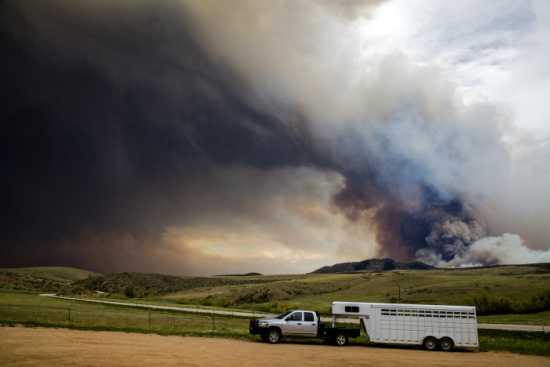Wildfires have become “normal” in past few years, and those living in areas prone to droughts and fires need to be ready to evacuate at a moment’s notice. Most of the time, that makes a vehicle the quickest way to escape a fire, so here is what you should and should not do when leaving in a car.
Wildfire Vehicle Evacuation DO’S:
- Make a plan – Figure out an evacuation route before a fire begins. Once you have a route in mind, pick a backup route just in case. If you’re interested in creating a wildfire action plan, click here to read more on the subject.
- Keep your gas tank full – make sure you have almost a full gas tank at all times during wildfire season. You never know when you will need to leave, and knowing you have at least 3/4 of a tank of fuel will allow you the liberty to change routes if needed and escape.
- Keep your bags in the vehicle – especially during wildfire season, keep a bug-out bag made specifically for this possibility in your vehicle. That way, once evacuation orders are made, you can simply jump in your car and go. As well, consider having multiple bug-out bags so that whether you are at the office or at home, you can bug out in a timely manner. Your bug-out bag should contain clothes for everyone in the family, some N95 masks to help protect from particulate and smoke inhalation, a wool blanket for everyone (wool is not as flammable as other synthetic fabrics), and at least two gallons of water for each person. If you intend to evacuate with pets, take their water needs into consideration too.
- Park in an open parking lot – Try to find an open and paved parking lot. The pavement will not catch fire like grasses in an open clearing could.
- Keep headlights on – Keep your headlights on so emergency response or others can see your car in the smoke.
DON’TS:
- Roll Windows Down- do not roll your windows down. Doing so will let smoke and particulates in and potentially cause problems with breathing and lungs.
- Turn On The Air Conditioning – Turning on the A/C will also allow more airflow, which could pull in more smoke.
- Park Near Trees or Brush – Once you have left your home in your vehicle, avoid parking near trees and brush.
- Get Out of the Vehicle – If the fire approaches, stay inside the vehicle! If you park in the correct spot, you will likely be ok. You can also try to put a concrete wall between you and the fire, however, this seems like it may be a minimal chance of finding a wall to protect you while you are in a hurry to escape a wildfire.
- Delay – Quickly leave when instructed to do so. The longer you wait after an evacuation order has been made, the longer it will take to flee the area. Any delay could hamper your efforts at getting out unscathed. Prepare to leave immediately by already having what you need in your vehicle.
Related: Are You Ready: Wildfire Preparedness
Understanding the do’s and don’t’s of wildfire safety and evacuations could save your life and the lives of your family. If you live in areas susceptible to fires, make sure you are prepared for the possibility of having to leave. Mental preparation is often overlooked. Mental strength will be needed, especially when dealing with the stresses of possibly losing everything you have to a fire.
Be strong. Be prepared. Your family is counting on you.
This article was originally published at Ready Nutrition™ on August 23rd, 2021








Coming from Australia, the land of the jail state, we are well await of fires and make sure that our houses are cleared around, and we have adequate fire fighting gear on the farm, including roof top sprinklers powered by gravity fed water, and hand fire tools like knapsack sprayers and so on. Most farmers out here are a member of the local Rural Fire Service, so we know what to do. Yr wildfires are still scary though.